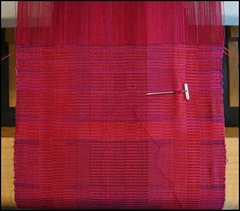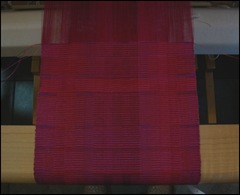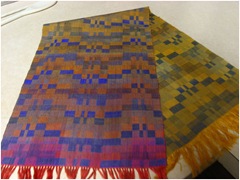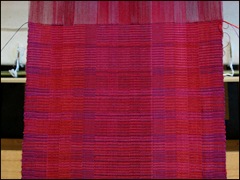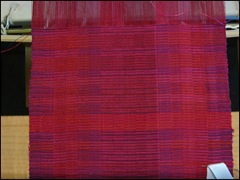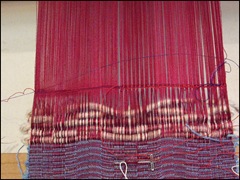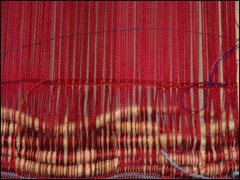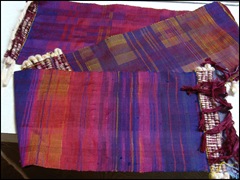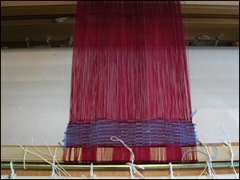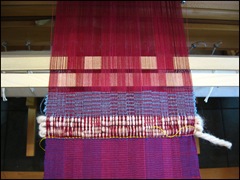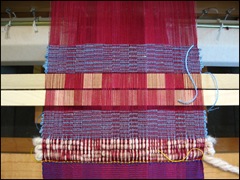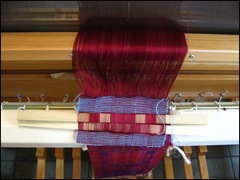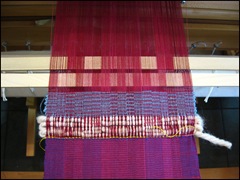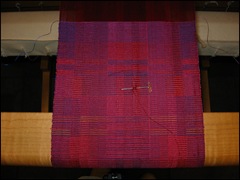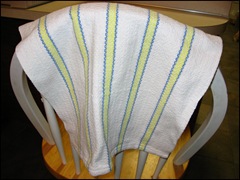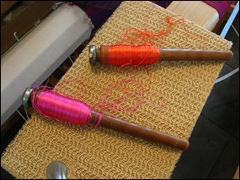I still have to weave the part that will fold back for the casing, but this is what the piece should look like at the top.
Above the horizontal red band, I have reversed what was going on from the beginning. Instead of the red block areas getting taller, they are now getting shorter but at a more rapid pace than the pace at which they grew. Of course, I do not really know if this will work until I take it off the loom and see the whole thing of a piece. But that won't happen for awhile. I am going to go on to weave two more pieces before I think about removing any from the loom.
The pin, by the way, is holding in place the original warp end that I had to temporarily replace because it had a knot in it.
RESISTANCE
What I really have to do, however, is to get the earlier piece ready to mail. There is a great deal of resistance in me to doing that. Why? Simply because I have never done this before. And when I have to do something new that is important to me, fear has a tendency to paralyze me. It looks like I am going to have to figure one one very tiny thing I can do to get the process started, one baby step. This is my usual method for overcoming resistance.
IMAGE COLOR
By the way, the color in this photo looks pretty true to the real thing. Either I was depressed when I worked with the last image or the light was much brighter today (it was, as a matter of fact.).
Related Posts:
ResistanceMore on Resistance
Art Piece 4: I've Changed My Mind Again
© 2008
